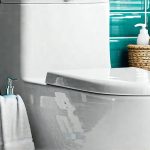Staying adequately hydrated is fundamental to overall health and wellbeing – it impacts everything from cognitive function and energy levels to skin health and digestive processes. Yet, many people struggle with maintaining proper hydration, not because they don’t understand its importance, but because the act of drinking often leads to frequent and inconvenient trips to the bathroom. This creates a frustrating cycle where individuals may consciously reduce their fluid intake to avoid urgency, inadvertently leading to chronic mild dehydration. The key isn’t necessarily more water, but smarter hydration – techniques that allow you to absorb fluids effectively without overwhelming your bladder and disrupting your day.
The challenge lies in understanding the interplay between fluid intake, absorption rates, kidney function, and individual physiological differences. Factors like caffeine consumption, sodium levels, underlying medical conditions, and even stress can all influence how often we need to urinate. This article will explore practical strategies to stay well-hydrated while minimizing those disruptive urges, focusing on mindful drinking habits, strategic fluid choices, and lifestyle adjustments that promote optimal hydration without the constant bathroom breaks. It’s about finding a sustainable approach to hydration that fits your life, not battling against your body’s natural processes.
Optimizing Fluid Intake: Beyond Just Water
Simply increasing water intake isn’t always the solution. In fact, gulping down large quantities of water at once is a surefire way to trigger urgency and frequent urination. The goal is consistent hydration throughout the day, rather than sporadic bursts of fluid consumption. Think of it as maintaining a steady state, allowing your body to absorb fluids efficiently without overwhelming the bladder. This involves shifting from reactive drinking (only when you feel thirsty) to proactive sipping – regularly taking small amounts of fluid even before thirst kicks in.
Consider spreading your water intake evenly throughout waking hours. A good starting point is aiming for approximately 8 ounces every hour or two, adjusting based on activity level and climate. Paying attention to the color of your urine can also be a helpful indicator; pale yellow generally signifies adequate hydration, while darker shades suggest you need to increase fluid intake. Remember that individual needs vary considerably – active individuals in hot climates will naturally require more fluids than sedentary people in cooler environments. Don’t fixate on an arbitrary number like “eight glasses”; listen to your body and adjust accordingly.
Beyond plain water, various beverages contribute to hydration. Herbal teas (without caffeine), infused waters with fruits or vegetables, and even diluted fruit juices can be excellent options. However, it’s important to be mindful of ingredients that might increase urination frequency, such as caffeine and alcohol. These act as diuretics, meaning they promote fluid loss. If you do consume caffeinated beverages, balance them out with extra water to counteract their diuretic effect. Electrolyte-rich drinks can also be beneficial, particularly after strenuous exercise or in hot weather, but avoid those loaded with sugar.
Hydration Through Food Sources
Many fruits and vegetables have a high water content and contribute significantly to daily fluid intake. Incorporating these into your diet is not only nutritious but also provides a more sustained form of hydration compared to solely relying on beverages. Think about adding watermelon, cucumbers, strawberries, oranges, or celery to your meals and snacks – they’re naturally hydrating and packed with vitamins and minerals.
- Watermelon: approximately 92% water
- Cucumbers: around 96% water
- Strawberries: roughly 91% water
This approach is advantageous because the fiber in these foods slows down digestion, allowing for a more gradual absorption of fluids. This contrasts with drinking large amounts of water quickly, which can lead to rapid bladder filling and urgency. Furthermore, consuming hydrating foods provides essential electrolytes, helping maintain fluid balance within the body. It’s about integrating hydration into your overall dietary habits rather than treating it as a separate task.
The Role of Electrolytes in Hydration
Electrolytes – sodium, potassium, magnesium, and chloride – are crucial for maintaining proper fluid balance and nerve function. When you sweat, you lose electrolytes along with fluids. Replenishing these lost electrolytes is vital for optimal hydration, especially during physical activity or in hot weather. A deficiency in electrolytes can disrupt the body’s ability to regulate fluid levels, leading to dehydration symptoms even if you’re drinking enough water.
You can replenish electrolytes through various sources:
1. Electrolyte-rich beverages (choose low-sugar options)
2. Foods like bananas (potassium), spinach (magnesium), and pickles (sodium – in moderation)
3. Adding a pinch of sea salt to your water (for sodium, but consult with a healthcare professional if you have hypertension)
It’s important to note that excessive electrolyte intake can also be harmful, so maintaining a balanced approach is key. Listen to your body and adjust your electrolyte consumption based on activity level and individual needs. The goal isn’t just about replacing lost electrolytes, it’s about supporting the overall fluid balance within the body.
Minimizing Diuretics and Bladder Irritants
Certain substances can increase urine production or irritate the bladder, leading to urgency and discomfort. Caffeine, alcohol, artificial sweeteners, spicy foods, and acidic fruits (like citrus) are common culprits for many people. Identifying your personal triggers is crucial for managing hydration effectively. This might involve keeping a food and fluid diary to track what you consume and how it affects your urination frequency.
Reducing or eliminating these substances can significantly improve bladder control and reduce urgency. If you enjoy coffee or tea, consider switching to decaffeinated options or limiting your intake. Similarly, if citrus fruits cause irritation, explore alternative sources of vitamin C. It’s not necessarily about completely avoiding these substances, but rather being mindful of how they impact your body and adjusting consumption accordingly. Sometimes, simple modifications can make a substantial difference in managing hydration without triggering unwanted urgency.
The most important aspect of staying hydrated isn’t just how much you drink, but how you approach it. It’s about creating sustainable habits that support your individual needs and lifestyle, allowing you to enjoy the benefits of proper hydration without the frustration of constant bathroom breaks. Focus on consistent sipping, integrating hydrating foods into your diet, replenishing electrolytes when necessary, and minimizing diuretics – these strategies will empower you to stay well-hydrated and feel your best.





















